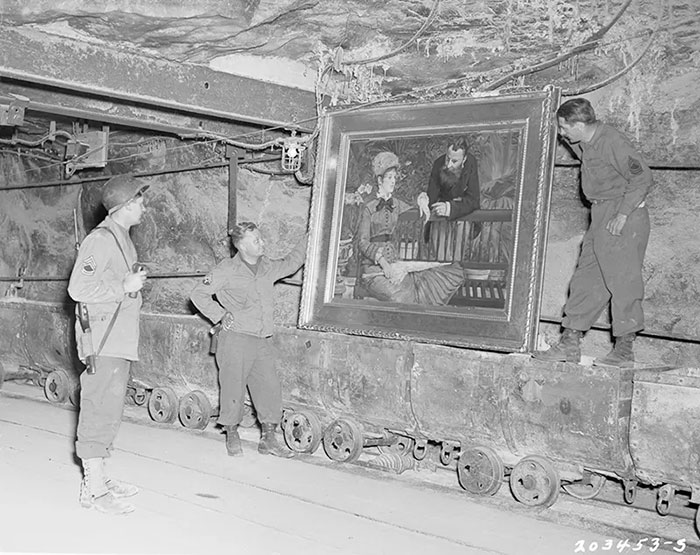
U.S. soldiers examine a famous painting, “Wintergarden,” by French Impressionist Edouard Manet, part of a collection of Reichbank wealth, SS loot and paintings removed by the Nazis from Berlin to a salt mine vault.
The courageous individuals known as the Monuments Men put their lives on the line to protect invaluable works of art from falling into the hands of the Nazis during World War II. Through their unwavering commitment to the preservation of cultural heritage, they made an indelible impact on the world of art and culture, safeguarding precious masterpieces for future generations to appreciate and cherish.
The Monuments Men were a group of art experts, historians, curators, and other professionals who were tasked with protecting and recovering cultural treasures during and after World War II. They were assembled by the Allied forces, primarily from the United States, United Kingdom, and other countries, and their mission was to locate and safeguard artwork and cultural property that had been looted or at risk of destruction during the war.
The Monuments Men were organized under the Monuments, Fine Arts, and Archives (MFAA) program, which was established in 1943 by the Allied military authorities. They operated in theaters of war across Europe, including areas that were occupied by the Axis powers, and worked to identify and protect important cultural sites, buildings, and objects from damage, theft, or destruction.
The efforts of the Monuments Men were instrumental in rescuing and recovering numerous priceless works of art and cultural treasures, including paintings, sculptures, manuscripts, and other cultural objects, that had been looted by the Nazis or otherwise at risk during the war. Their work helped to preserve important cultural heritage and contributed to the restitution and recovery of stolen artwork to their rightful owners after the war.

Theodore Lee is the editor of Caveman Circus. He strives for self-improvement in all areas of his life, except his candy consumption, where he remains a champion gummy worm enthusiast. When not writing about mindfulness or living in integrity, you can find him hiding giant bags of sour patch kids under the bed.
